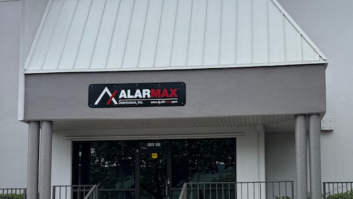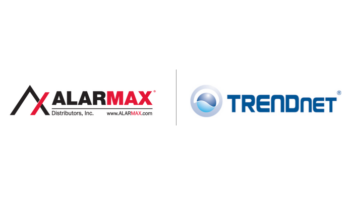Scottsdale, Ariz. — Specialty retailers and custom installers came away from the recent PARA conference with more than just a tan after five days of meals under the sun here at the Camelback Inn.
Attendees walked away with expert advice on how to make a profit on labor, turn their companies into brands, cultivate Nordstrom-like customer-service reputations, and manage employee and customer relationships.
The conference agenda also helped guide dealers’ response to accelerating technology and industry changes, including the convergence of CE and IT technologies in the home; the impact of wireless on the custom-installation business; and growing retail-level competition from cable operators, PC manufacturers and national chains (see TWICE, May 3, p. 1).
While dealers formulate their responses to these changes, they must simultaneously continue to upgrade their current business practices, from managing cash flow to increasing the profitability of labor, attendees were told.
One presenter, Wilshire Home Entertainment Chief Financial Officer Mike McMasters, outlined how he turned a 2 percent loss on labor to a net profit of 8 to 10 percent, starting with the development of a departmental income statement. The statement excludes the cost of products and sales but includes installer wages, vehicle costs, tools, training, rent and administrative allocations, and the cost of such materials as interconnects.
To improve labor utilization rates [hours billed to hours worked], Wilshire implemented several strategies to cut down on unproductive return trips to the showroom. One strategy is to stage products and materials seven days before a job is scheduled to provide enough time to procure missing products. The company also outfits installers’ vehicles with bins of interconnects that can be sold off the truck and invoiced at the site, McMasters said.
John Banks, owner of Audio Centre in St. Laurent, Canada, said he boosted labor utilization rates to 80 percent from 40 percent, in part by requiring a salesperson’s change orders to go through a system designer to incorporate accurate labor-cost changes. On top of that, salespeople earn a commission on the profitability of a job’s labor, not on the volume of labor, he said. The company also created yearly team bonuses for installers to “create peer pressure” to perform. Separately, the company awards bonuses per technician per contract, with the bonus rising if costs come in under contract.
George Liu, owner of Tampa’s Audio Visions, said he boosts installer productivity by e-mailing work orders to installers’ homes on the night before a scheduled job.
In researching construction-industry practices, consultant Robert Macfarlane devised 10 tips for squeezing more profit out of labor, including the installation of systems that let managers review a project’s costs on a daily or twice-weekly basis, not a month after job is completed.
Some surefire ways to lose money on labor, Macfarlane said, are not knowing the true cost of keeping an installer on the road for one hour, including vehicle and vehicle-insurance costs. Macfarlane also suggested dealers market standardized systems so that installers become more productive.
Robert Lydecker, a Warwick, R.I., installer, suggested that “nice uniforms and trucks” will help boost labor profitability because they “reduce labor-charge complaints.” Along those lines, he also suggested installers wear booties into a house and bring their own vacuum cleaner.
One presenter questioned how much labor income would be generated in a wireless world. Asked Tweeter executive Noah Herschman: “What will the custom installation business look like when there are no more wires to pull?” He pointed to future wireless technologies such as ZigBee, which transmits low bit-rate control signals to home systems, and ultrawideband (UWB), which he called a potential cable-supplier killer because of its ability to distribute multiple HDTV streams around the house.
Other presenters contended that structured wiring isn’t going away. One of them was Intel strategic programs director Donald Whiteside, who told PARA members that “structured wiring is here to stay for the real-time delivery of entertainment content with high quality of service expectations.” Wireless opportunities nonetheless exist for PC mobility in a house and moving content from a PC or PVR to portable devices, he said.
Bill Thompson, president of structured-wiring company UStec, pointed to consumers’ wireless experiences with cordless phones and wireless PC networks and said, “Reliability and performance are most important” among custom customers. Thompson echoed consultant Jim Taylor’s insight that today’s consumers are risk-averse.
“A brand is a promise,” said Taylor, who was chief marketing officer of Gateway in the late 1990s. “It’s about risk management. Consumers play not to lose.”
Gateway successfully used that insight during his years there, Taylor said. At that time, the PC maker targeted housewives who bought PCs for their kids and promoted the message that “you have a friend in the business.” The company “empowered women” and “taught them how to change a hard drive,” he said.
Also to improve sales and profit, companies should empower employees by giving them the freedom to make decisions that will enable a customer “to claim a salesperson as his own,” said Robert Spector, author of The Nordstrom Way. When there are “too many rules,” he said, “the rules become most important and the customer less important.”
Customers should rule when it comes to developing customer relationship management (CRM) programs, added consultant Fred Newell. Typical CRM programs “try to make business better for the company,” but “it’s time for customer management of relationships (CMR), making business better for the customer,” he said.
Relationship marketing, Newell continued, “can work for you if you let customers manage the relationship to make things more convenient for them.” CRM, he said, will boost retention of a dealer’s best customers.
CRM “is not just about having better customer information and perhaps then being able to offer new services,” he explained. “It is about personalizing the transaction.” E-mail advertising to past customers “isn’t spam if you tailor the information so it’s of interest to a particular customer,” he continued. “Talk only about what they want to talk about.”
The rules of CMR, he said, include: making media selections by letting customers guide you to their preferred source of information, spending to offer only those products that particular customers are interested in, and not offering the same level of service to all customers. “Learn the level of service each individual customer wants and deliver no more, no less,” he said.
CMR “starts with new thinking and new questions,” Newell said.
Such thinking, said consultant Robert Sutton, often comes from employees rather than management. “To succeed, you need the opposite of a good employee,” he said. Complainers and troublemakers “enhance organizational change.” No business needs a “person who complains without fixing things,” he cautioned, but four types of complainers or questioners “promote organizational learning.” One type is the “noisy complainer” who repairs problems right away and lets everyone know the system failed. The second is a “noisy troublemaker” who “always points out others’ mistakes to help them and the system learn, not to point fingers.” The “mindful error maker” talks about their mistakes so others can avoid making the same ones, and the “disruptive questioner “is always asking why things are done a certain way.













